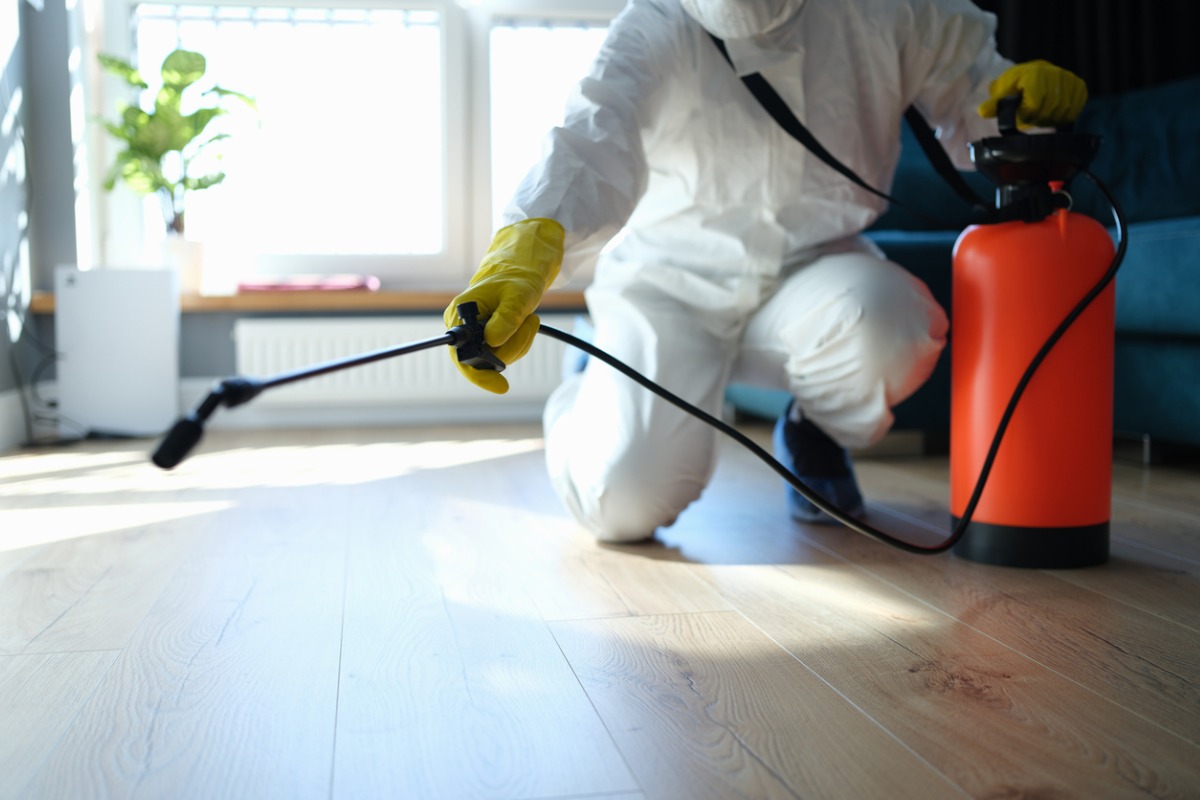Reliable Pest Control Homestead Solutions to Protect Your Residential or commercial property
Reliable Pest Control Homestead Solutions to Protect Your Residential or commercial property
Blog Article
Discover the Secrets of Insect Control: How It Functions and Process Revealed
Bug control is a thorough method that involves a deep understanding of parasite behavior, strategic preparation, and exact implementation. From identifying the origin triggers of problems to executing tailored control actions, the procedure of pest control is a mix of science and technique targeted at preserving a harmonious atmosphere. The intricacies of this procedure commonly remain veiled, shrouded in secret. Untangling the nuances behind effective parasite control reveals a globe of systematic approaches and very carefully determined actions that are vital in combating and stopping pest-related problems.
Insect Actions Comprehending
Recognizing the intricate behaviors of pests is crucial for efficient parasite control administration. By delving into the behaviors and patterns of numerous parasites, specialists can create targeted techniques to eradicate problems and avoid future occurrences. For example, the behavior of cockroaches, such as their preference for moist and dark environments, guides pest control professionals in determining where to concentrate treatment efforts. Likewise, understanding that rodents are nocturnal creatures assists in establishing up traps and lures during the most energetic hours. Additionally, understanding the reproductive cycles of bugs like ants help in interrupting their swarms' development.
By remaining abreast of the newest research study on pest actions, parasite control experts can continuously fine-tune their approaches and stay in advance of advancing pest populations. Eventually, a deep understanding of pest habits is a foundation of successful pest control administration.

Assessment and Identification Approaches
Reliable insect control management depends heavily on meticulous evaluation and accurate identification methods to properly establish and evaluate invasions targeted obliteration strategies. Assessment includes a detailed exam of the residential or commercial property to establish the degree of the bug problem, recognize the sort of parasite existing, and find potential entry factors. This process might include visually checking common hiding areas, utilizing monitoring tools such as traps or cameras, and analyzing pest droppings or damages indications.
Identification is an essential step that follows evaluation, as different parasites call for details treatment techniques. Parasite control specialists utilize their proficiency and understanding of bug behavior to determine the species existing accurately.
Parasite Control Steps Implementation
Having actually carefully examined and accurately recognized the insects existing, the following critical action is the application of targeted insect control measures to properly eliminate the invasion. Chemical treatments involve the use of pesticides to get rid of bugs, while organic controls introduce natural predators to handle pest populaces.
Appropriate execution of insect control measures needs competence to make certain the safety of inhabitants and the environment. When applying pesticides and to make use of suitable protective equipment, it is critical to comply with regulations and standards. Monitoring and follow-up examinations are necessary to examine the performance of the selected approaches and make any kind of necessary modifications. By using targeted insect control steps, infestations can be effectively gotten rid of, creating a healthier and pest-free setting.
Environmental Effect Considerations
Cautious assessment of the possible ecological impact is a vital facet when applying insect control procedures. Parasite control approaches can have different impacts on the setting, including non-target species being affected, contamination of dirt and water resources, important source and disturbance of the ecological community. It is important to think about these aspects to minimize any type of negative effects on the setting.
To mitigate environmental influences, integrated insect administration (IPM) strategies are typically suggested. IPM concentrates on using a mix of methods such as biological control, environment adjustment, and the targeted use pesticides as a last option. Pest Control Homestead. By employing an alternative approach, IPM aims to manage insects efficiently while lessening harm to the environment

Ongoing Tracking and Avoidance
Continuous tracking and avoidance play critical duties in keeping efficient pest control techniques with time. When preliminary pest control measures have actually been executed, continuous monitoring becomes necessary to track bug activity levels and make certain read that the chosen approaches are working successfully. Regular evaluations by experienced experts enable the very early detection of any kind of signs of bug resurgence, allowing speedy action to be taken before the invasion intensifies.
Safety nets are equally vital in maintaining a pest-free environment. Applying techniques such as sealing entry points, preserving sanitation, proper waste administration, and minimizing resources of food and water rob parasites of the basics they need to flourish. By proactively dealing with these factors, the chance of a parasite problem is dramatically minimized.
Furthermore, safety nets contribute to the lasting success of pest control efforts, lessening the need for reactive therapies and associated expenses. By integrating continuous monitoring and prevention into an extensive bug monitoring strategy, individuals and businesses can efficiently secure their residential properties against undesirable burglars.
Verdict
Finally, insect control these details entails understanding parasite habits, conducting detailed assessments, carrying out control actions, taking into consideration environmental influences, and maintaining ongoing surveillance and avoidance. By adhering to these steps, insect invasions can be efficiently managed and managed. It is necessary to take an aggressive strategy to pest control to safeguard both human health and wellness and the environment.
By remaining abreast of the newest study on insect actions, bug control professionals can consistently refine their strategies and stay in advance of evolving bug populaces.Having diligently checked and properly recognized the parasites present, the next essential action is the implementation of targeted parasite control actions to successfully eliminate the infestation.Furthermore, selecting eco pleasant pest control products and techniques can considerably lower the environmental impact of pest monitoring methods - Pest Control Homestead. As soon as preliminary pest control procedures have been carried out, ongoing monitoring comes to be necessary to track bug task degrees and make certain that the selected methods are functioning effectively.In verdict, parasite control entails understanding parasite behavior, conducting thorough inspections, carrying out control procedures, taking into consideration ecological impacts, and keeping continuous monitoring and avoidance
Report this page